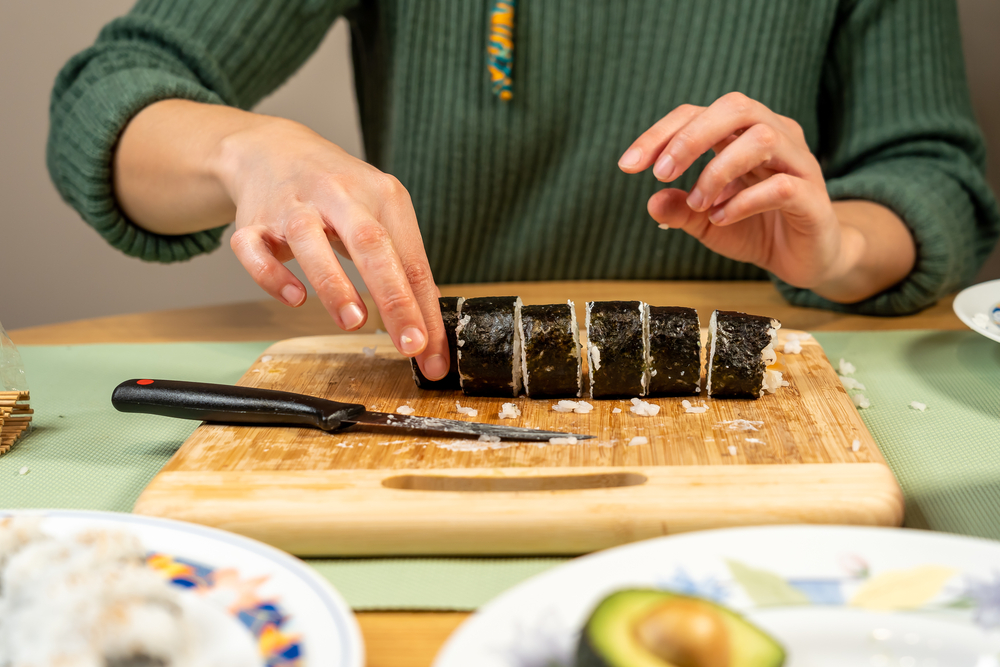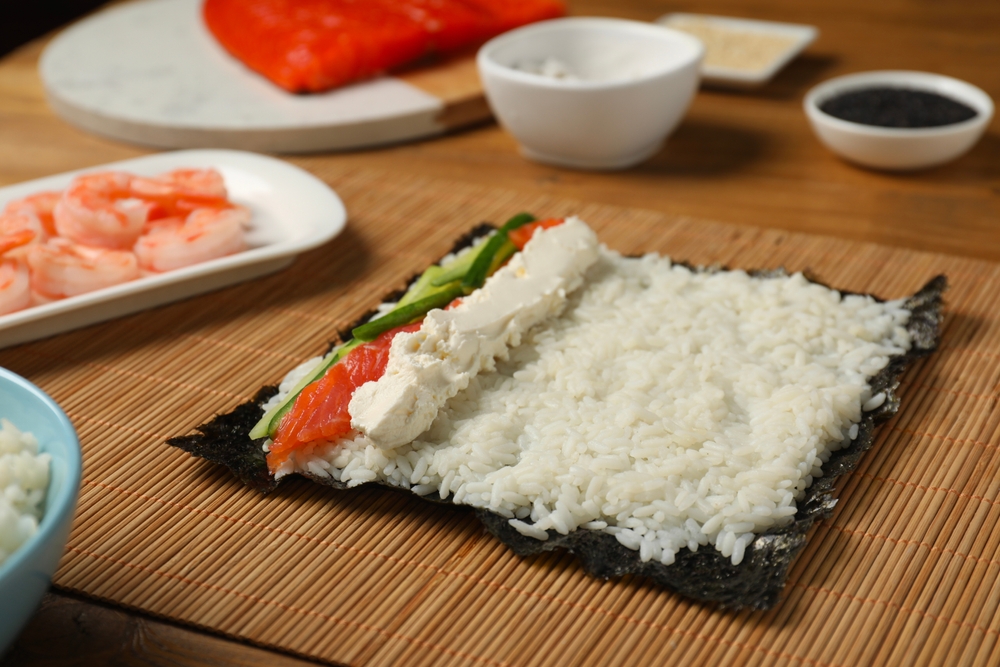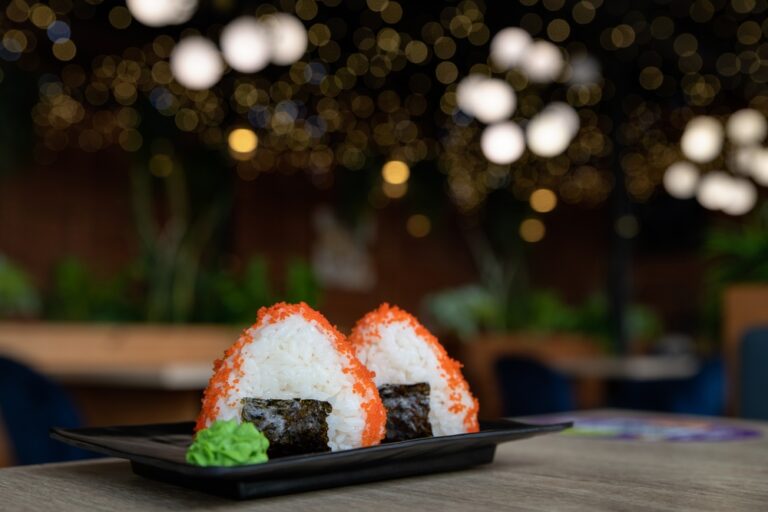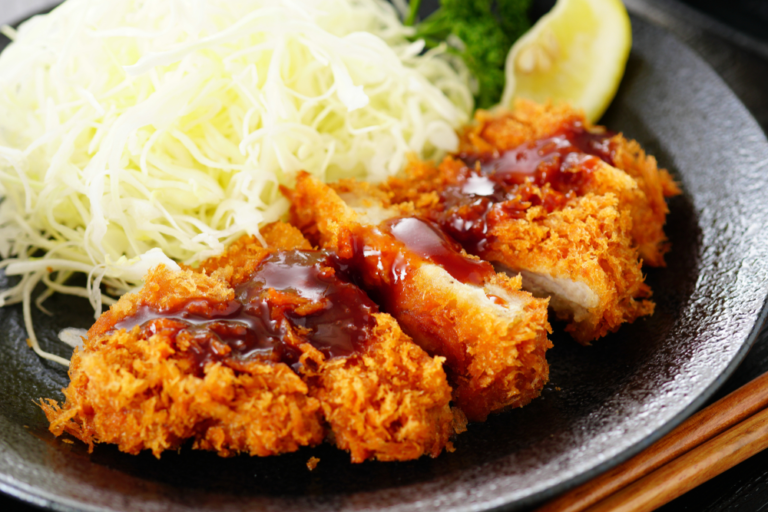Homemade Sushi recipe
Master the art of homemade sushi with this simple and versatile recipe. Whether you’re a seasoned pro or a curious beginner, crafting your own sushi rolls at home opens up endless possibilities for customization. Swap out imitation crabmeat for smoked salmon or add your favorite fillings.
The secret to perfect sushi starts with properly seasoned rice, combining a blend of rice vinegar, sugar, and salt for that signature flavor. Paired with fresh avocado, crisp cucumber, and pickled ginger, each bite is an explosion of taste and texture.
Roll up your sleeves, prepare your bamboo mat, and get ready to roll—literally! This recipe guides you through creating beautifully rolled sushi that’s sure to impress your guests. Serve with teriyaki sauce and a hint of wasabi for a restaurant-quality experience at home.

Homemade Sushi: Key Ingredients
Ingredients
- Short-Grain White Rice: The foundation of every great sushi roll, offering a tender and slightly sticky texture that holds each bite together.
- Rice Vinegar: Balances the rice with a subtle tang, enhancing the overall flavor profile and adding authenticity to each roll.
- Nori Seaweed Sheets: Wraps the sushi roll in an earthy, umami-rich embrace, providing structure and a touch of oceanic flavor.
- Imitation Crabmeat: Delivers a delicate, sweet taste that pairs perfectly with the other ingredients, offering a classic filling option.
- Avocado: Creamy and rich, it adds a buttery texture that contrasts beautifully with the crunch of fresh vegetables.
- Cucumber: Crisp and refreshing, it offers a pleasant crunch, bringing balance to the softer elements in the roll.
- Pickled Ginger: A zesty, palate-cleansing addition that enhances the flavors with a hint of sweetness and spice.

Recipe Tips
- Mastering Sushi Rice: Properly seasoned sushi rice is the foundation of this dish. After cooking the rice, gently fold in the mixture of rice vinegar, sugar, and salt while it’s still warm. Use a wooden spoon and avoid mashing the grains. This ensures the rice absorbs the flavors evenly while maintaining its texture. Let the seasoned rice cool to room temperature before using it on the nori sheets, as warm rice can cause the seaweed to become too soft and difficult to handle.
- Rolling Technique: The key to a perfect sushi roll is in the technique. Lay the nori sheet on a bamboo mat with the shiny side down, and spread a thin, even layer of rice using wet hands to prevent sticking. Arrange your fillings in a straight line near the bottom third of the rice. Use the bamboo mat to roll the sushi tightly, applying gentle pressure as you go to ensure a compact roll. Practicing this technique will help you achieve restaurant-quality results every time.
- Cutting Cleanly: Cutting sushi rolls neatly can be challenging, but using a sharp, wet knife makes all the difference. Dip the knife in water before each cut to prevent sticking, and use a gentle sawing motion rather than pressing down. This helps maintain the roll’s shape and creates clean, precise slices. For best results, slice the roll in half first, then cut each half into smaller pieces.
What to Serve with Homemade Sushi
- Miso Soup: Miso soup is a classic side that pairs wonderfully with sushi. Its warm, savory broth complements the cool, fresh flavors of the sushi rolls. The combination of tofu, seaweed, and green onions adds texture, making it a comforting yet light accompaniment.
- Edamame: Lightly salted steamed edamame is an ideal appetizer to serve alongside homemade sushi. The natural sweetness and slightly nutty flavor of the soybeans provide a satisfying contrast to the vinegared rice and rich avocado, enhancing the overall dining experience.
- Seaweed Salad: A refreshing seaweed salad with a tangy sesame dressing is another great choice. Its crunchy texture and umami-rich flavor balance out the richness of the sushi rolls. The combination of seaweed and sesame seeds offers a harmonious blend that ties together the meal beautifully.
FAQ
- Can I use a different type of rice for sushi?
While short-grain white rice is recommended for its sticky texture, you can use medium-grain rice if short-grain is unavailable. Avoid using long-grain rice as it won’t provide the same consistency needed to hold the sushi together. - What can I substitute for imitation crabmeat?
You can use fresh seafood like smoked salmon, shrimp, or even cooked tuna for a richer taste. For a vegetarian option, try marinated tofu or thinly sliced roasted vegetables like bell peppers or carrots. - Do I need a bamboo mat to make sushi?
While a bamboo sushi mat makes rolling easier, you can use plastic wrap and a clean kitchen towel as an alternative. Simply lay the plastic wrap on the towel, place the nori on top, and roll as you would with a mat. - How do I store leftover sushi?
Sushi is best enjoyed fresh, but if you have leftovers, wrap each roll tightly in plastic wrap and store it in an airtight container in the refrigerator. Eat within 24 hours, as the rice will harden over time and the nori may become soggy.

Homemade Sushi
Ingredients
- 4 sheets nori seaweed
- 1 avocado peeled, pitted, and sliced
- ½ cucumber peeled and cut into thin strips
- 2 tablespoons pickled ginger
- ½ pound imitation crabmeat flaked
- 1 ⅓ cups water
- ⅔ cup uncooked short-grain white rice
- 3 tablespoons rice vinegar
- 3 tablespoons white sugar
- 1 ½ teaspoons salt
Instructions
- Prepare all ingredients. Preheat the oven to 300°F (150°C).
- In a medium saucepan, bring the water to a boil. Add the rice, reduce heat to medium-low, cover, and cook until the rice absorbs the water and becomes tender, around 20 to 25 minutes.
- In a small bowl, combine the rice vinegar, sugar, and salt. Gently incorporate this mixture into the warm rice, stirring lightly. Allow the rice to cool to room temperature.
- Place the nori sheets on a baking sheet.
- Position a nori sheet on a bamboo sushi mat, shiny side down. With wet hands, spread a thin layer of rice over the nori. Arrange a portion of the crabmeat, avocado, cucumber, and pickled ginger in a line across the center of the rice.
- Using the bamboo mat, roll the nori tightly around the filling, forming a compact roll. Repeat this process with the remaining ingredients.
- Slice each roll into 4 to 6 pieces using a wet, sharp knife for clean cuts. Serve and enjoy your homemade sushi.





